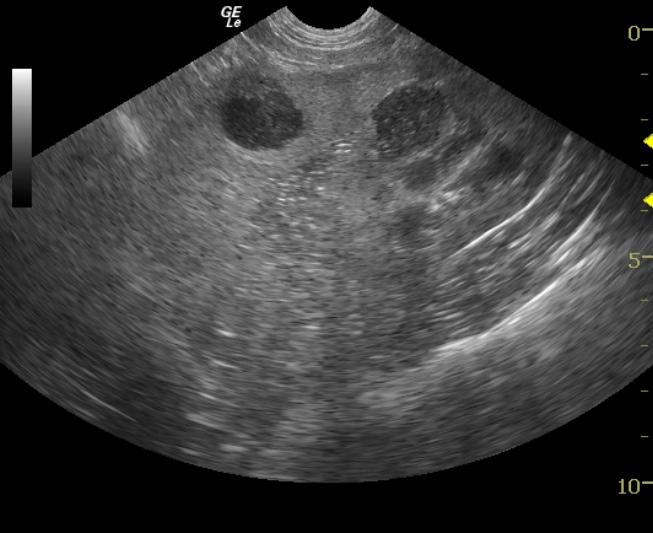A 14-year-old FS dog presented for a collapsing episode. The owner reported that the patient had been shaking and then fell over. On physical exam, the patient was found to be unsteady on her feet, and she had a rotational nystagmus. Ceruminous discharge was present in the left ear. There was crepitus of a number of joints consistent with degenerative joint disease (DJD), as well as focal alopecia along the dorsal aspect of her neck and tail. The patient was discharged with anti-nausea and ear medications, as well as an NSAID.
A 14-year-old FS dog presented for a collapsing episode. The owner reported that the patient had been shaking and then fell over. On physical exam, the patient was found to be unsteady on her feet, and she had a rotational nystagmus. Ceruminous discharge was present in the left ear. There was crepitus of a number of joints consistent with degenerative joint disease (DJD), as well as focal alopecia along the dorsal aspect of her neck and tail. The patient was discharged with anti-nausea and ear medications, as well as an NSAID. Blood work and a urinalysis were not performed prior to dispensing these medications, however, a urine culture yielded growth of Kluyvera sp. and Escherichia coli.
Blood work was performed several months later and revealed hyperproteinemia, hyperglobulinemia, hypercholesterolemia, hyperamylasemia, as well as elevated SAP and elevated GGT enzyme activities. Thrombocytosis was present on the CBC. The TT4 was within the normal reference range.
Recheck blood work a few months later showed an improvement of the SAP, but the ALT was elevated, and the platelet count was still elevated. The patient did not show any recurrence of the original clinical signs. Approximately one year later, she presented for signs of diarrhea and polyuria/polydipsia. The physical exam showed both nuclear sclerosis and cataracts bilaterally, discharge in the right ear, persistent DJD, as well as muscle atrophy of both hind limbs. The dog was administered subcutaneous fluids, injectable gastroprotectants, antibiotics and anti-diarrhea medications. She was discharged with oral gastroprotectants and anti-diarrheal medications.

